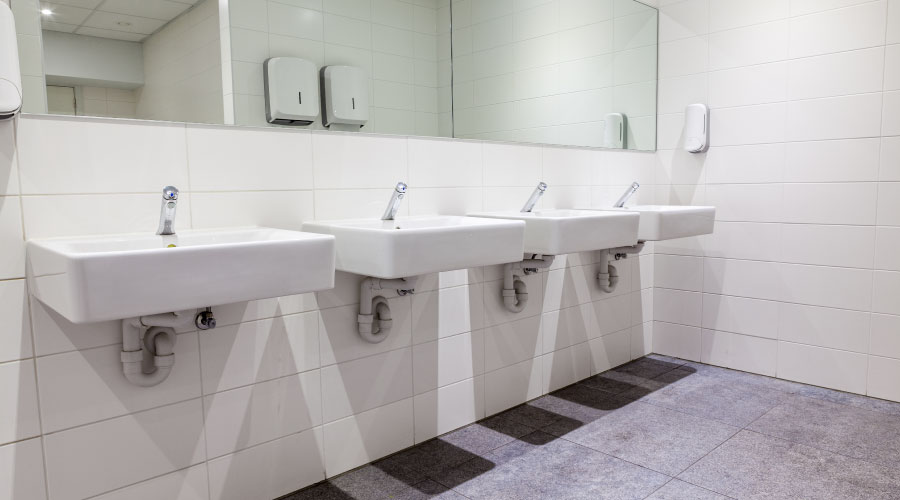Strategies for Reducing Landscape Irrigation Water Use
Landscape irrigation systems are major users of water. In determining the water-saving potential for each system, managers need to gather information on the number of heads attached, the rated flow rates of those heads, and the type of controls installed, particularly if the system uses ground-moisture sensors. They also need to record whether the system uses a separate water meter.
For each system, managers can calculate the amount of water used per hour of operation and the number of hours the system is used in a typical year. For systems without ground-moisture sensors, managers can estimate the number of hours a year the system is activated even though it was raining or had recently rained. Managers can make a quick estimate by determining the number of days it has rained over the current season. Multiplying the system's flow rate by the number of unnecessary operating hours produces the approximate annual water savings.
To further reduce water use, managers can use a drip-irrigation system on landscaped areas that now use standard irrigation systems. While these systems are not suitable for use everywhere, in certain applications, drip irrigation can reduce irrigation system water requirements by 50 percent or more. Managers can estimate savings from such a change by comparing the different flow rates.
A more long-term method of reducing irrigation water requirements is to replace the existing plants that are drought tolerant and require minimal or no irrigation. Here the cost savings can be estimated by working with your landscaping contractor.
Presenting The Findings
The key to the successful financing of the retrofit program is the manager's presentation to top executives. The competition for funding in organizations is intense, and plumbing-system retrofits are not glamorous. So for managers to succeed, they must present their proposed retrofits in terms of hard numbers — how much the retrofit will cost and the amount it will save.
Managers should present the data in straightforward way — an itemized list of projects with a short description, the estimated implementation cost for the retrofit project, an estimate of the annual water use under the current systems and practices, an estimate of the annual water used by the retrofitted system, the annual water savings, and the amount of money savings produced.
The presentation also must include a plan that outlines the way the department will implement the program, including the way the manager will specify equipment and components, the person who will be responsible for implementation, and the way the department will monitor the system once installation is complete.
Plumbing-system retrofits designed to reduce water use are an effective way of controlling a facility's water use, reducing operating costs, and improving the public image of a facility.
James Piper, P.E., is a national consultant based in Bowie, Md. He has more than 25 years of experience in facility maintenance and management issues.
Related Topics:













